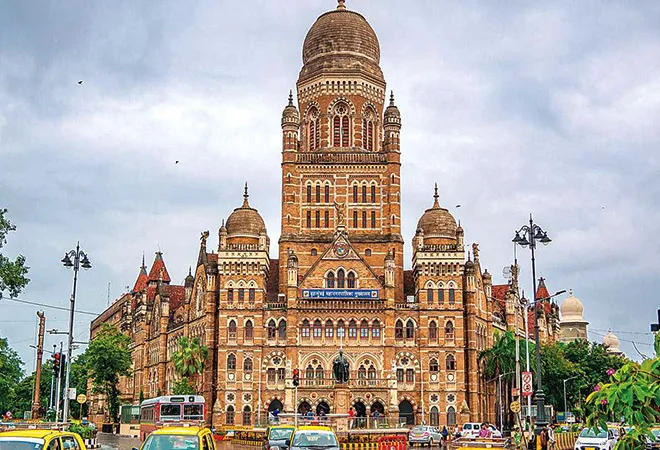-
CENTRES
Progammes & Centres
Location
To ensure citizen participation and awareness, it is instrumental that ULBS are slowly transformed into transparent and accountable bodies

This piece is part of the series, Governance Propositions of 2022
In the years and decades to come, India’s quality of governance would be increasingly determined by the manner in which urban local bodies (ULBs) would govern themselves. Between 1911 and 2011, the country has added 20.87 percent population to cities and towns; 5,572 additional urban agglomerations and towns have sprung up and 47 more metropolitan towns have emerged during the same period. It is estimated that by 2030, the urban population will be even a greater driver of the Indian economy and will contribute three-fourth of the national GDP. As larger populations move into cities, ULB governance will hold the key to national well-being. Therefore, the ability of ULBs to deliver good governance would be vital for the country’s interests. Transparency would be a key building block for good governance and ULBs would be well advised to significantly add to their transparency.
“Transparency” connotes the manner in which an organisation discloses information about itself and its operations. A critical stride towards transparency of public authorities was taken with the enactment of the Right to Information (RTI) Act. The Act firmly established the concept that citizens have a right to know and that governmental decisions are open to public scrutiny. However, the RTI Act merely mandated that public organisations must share information when asked for. A transparent organisation, however, would be one that provides information of its own volition.
The Act firmly established the concept that citizens have a right to know and that governmental decisions are open to public scrutiny.
Transparency is the substance of local accountability and the key that gives people the tools and information they need to enable them to play an incisive role in society. Unless it is satisfactorily established that there are sensitivities involved in a class of information, all significant information must be in the public domain. ULBs handle functions that enable daily life and are far removed from things such as foreign policy or national security and, therefore, are not privy to information that cannot be shared. Such information should be available in an easily understandable format and in good time. Fortunately, the advance of new technologies has made such moves towards transparency easy to accomplish.
There is a large variety of transparency mechanisms that the ULBs could employ. Firstly, ULBs can livestream the proceedings of the General Body and other committees of the ULBs, such as the Standing Committee, Improvements Committee, and others. It is worth noting here that proceedings of the Rajya Sabha, Lok Sabha, and State Legislatures are streamed live. It would, therefore, be appropriate that this practice be adopted by ULBs. Some municipal corporations have adopted the practice of allowing the media to sit through deliberations of the committees. Since vital business is carried out in these committees, it would be appropriate to allow its proceedings and decisions to be available to citizens.
Secondly, information related to the top echelons of municipal officers that are involved in important decision-making and head implementation wings of the ULBs should be on the website of the ULBs. This information would allow the city to have a clear idea of who is posted in which wing of the ULB, what is their grade and job title, how long they have been there, what assets do they hold and other details about their employment including contact details. This, however, would not extend to information that falls within the officer’s private domain.
Citizens need to know how much money the ULB collected, what were the sources, what were the heads on which money was spent and how surplus money is being invested.
Thirdly, information such as building permissions granted, rules framed, policies prepared, and circulars that impact people should also be periodically placed in the public domain. Furthermore, citizens need to know how much money the ULB collected, what were the sources, what were the heads on which money was spent and how surplus money is being invested. Transparency about municipal procurement is vital and details with regard to the award of all contracts beyond a certain stipulated value must be in the public domain. The details would comprise the name of the procuring department, description of goods and services procured, name and details of the supplier, and the total value of the contract.
With a view to check malfeasance, it would be worthwhile to share information regarding those municipal personnel who are being criminally investigated, those under departmental enquiry for irregularities, the stage of investigation, conclusion reached, and punishment awarded. ULBs should also undertake an exercise in transparency involving the simplification of laws, rules, and regulations. Globally, organisations are discarding difficult idioms and are attempting to put things as simply as possible so that ordinary people can also understand and comply with laws, rules, and regulations.
The use of information and communication technologies (ICTs) by public bodies to speed up decision-making processes and deliver quality information to citizens through more efficient and transparent structures is equally critical. IT tools for ULBs comprise, inter alia, web-based citizen services such as property tax payments, birth and death registrations, and enterprise management tools such as Management Information System (MIS), Financial Management System (FMS), and Performance Management System (PMS). Over a period of time, in stages, these systems would replace existing delivery mechanisms that lack the kind of speed and transparency people are looking for.
IT tools for ULBs comprise, inter alia, web-based citizen services such as property tax payments, birth and death registrations, and enterprise management tools such as Management Information System (MIS), Financial Management System (FMS), and Performance Management System (PMS).
E-governance also includes mobile-governance that moves the delivery of services to the hands of citizens. ULBs deliver a host of vital services related to public health, education, water, sanitation, street lighting, waste management, livelihood, transportation, gardens, and other essential services. Their delivery on a digital platform would radically alter both the efficiency of the ULB and the satisfaction levels of citizens. It is, therefore, recommended that cities be encouraged to leverage digital platforms for information-sharing and feedback.
While working on different kinds of transparency devices, some ULBs may find it difficult to implement all of them all at once. In such instances, it should be possible to implement them in stages. However, what is important to remember is that ULBS have been continuously demanding greater autonomy for themselves and the right to self-govern in the spirit of the 74th Amendment to the Constitution. Quite clearly, if ULBs seek autonomy, transparency and accountability are inescapable sequels that must match the measure of autonomy.
The views expressed above belong to the author(s). ORF research and analyses now available on Telegram! Click here to access our curated content — blogs, longforms and interviews.

Dr. Ramanath Jha is Distinguished Fellow at Observer Research Foundation, Mumbai. He works on urbanisation — urban sustainability, urban governance and urban planning. Dr. Jha belongs ...
Read More +